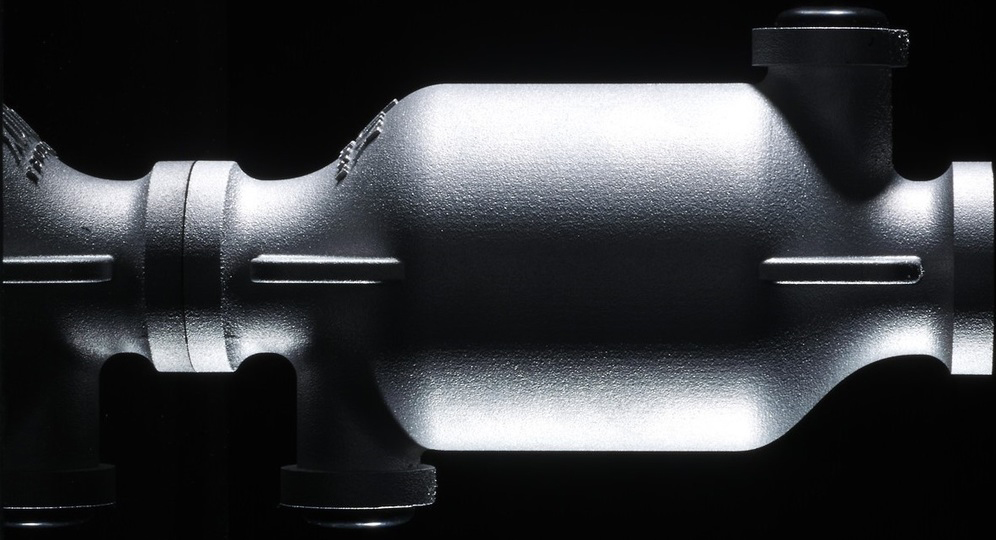
A heat exchanger design has attracted the attention of EOS.
But there’s a bit of a story first. EOS is the well-known manufacturer of plastic and metal 3D printing equipment based in Germany. The company is not publicly traded, and was founded by Dr. Hans Langer years ago. Langer remains the CEO of the EOS Group.
But in 2015, Larger founded something called “AM Ventures Holding GmbH”, which seems to be an investment vehicle for promoting interesting ventures making use of 3D printing technology. They explain:
AMV funds and develops innovative start-ups which focus on industrial-3D-Printing-related hardware, software, materials or applications. AMV also establishes and operates production sites based on Additive Manufacturing for specific and mass produced applications. Moreover, the company provides Start-ups with unique access to the technologies, expert know-how and the business network of the Langer group – such as EOS, the global technology leader for industrial 3D printing of metals and polymers and ScanLab, the technology leader for high-precision scanning systems.
Now AMV announced a deal with Geelong, Australia-based Conflux Technology. The company appears to be a 3D print service bureau specializing in 3D metal printing.
The specifics of the deal surround the “Conflux CoreTM Heat Exchanger”, a 3D printed metal unit apparently designed by Conflux Technology. The heat exchanger design includes a number of features enabled by 3D print technology:
High Thermal Exchange: Enhanced surface area density to volume ratio results in high thermal exchange performance.
Significantly Reduced Weight: Increased structural efficiency means a significant reduction in weight.
Low Pressure Drop: Optimised flow design reduces pressure drop & improves pumping efficiency.
Morphed Topology: Superior heat exchange technology tailored to your industry application.
What I find interesting here is that this type of design was first leveraged by industries producing very expensive parts, such as aerospace. That industry found significant advantages in producing low-weight, strong parts that could only be made with 3D printing approaches.
Now that same leverage is being applied to a much more common part, a heat exchanger. These are used in countless applications, including refrigeration, power equipment, chemical processes, automotive, HVAC and many others.
If Conflux Technology can produce these at relatively low cost, they could have a massive market to serve. And that market might be attracted by lower operational costs due to greater efficiency provided by the 3D printed design.
EOS likely had a prior relationship with Conflux Technology through equipment and service, but this side investment by EOS-related AMV could provide Conflux Technology a way to ramp up development and marketing of the new heat exchanger.
It seems like a very good bet by AMV.
And another thing: it’s interesting to see a 3D print manufacturer (actually a party strongly related to one) invest in a product produced by 3D printing. It may be that EOS sees this is a huge opportunity to drive future demand for 3D printing capacity, which they can obviously provide.

